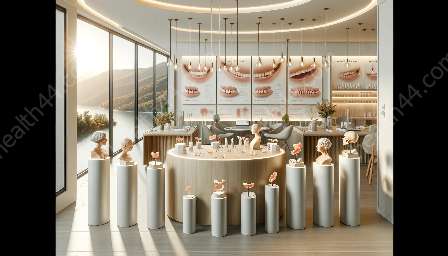Complete dentures have evolved significantly in recent years, with advancements in technology and fabrication techniques revolutionizing the field. These innovations have improved the comfort, fit, and functionality of dentures, ultimately enhancing the overall patient experience.
Advancements in Material Science
One of the most significant advancements in complete denture technology relates to material science. Traditional denture materials, such as acrylic and porcelain, have given way to newer, more durable materials that provide improved aesthetics and strength.
1. Flexible Denture Materials
Flexible denture materials, such as thermoplastic resins, offer a more comfortable and secure fit for patients. These materials are also less prone to breakage, providing increased durability and longevity for complete dentures.
2. Nanocomposite Resins
Nanocomposite resins have also gained popularity in denture fabrication due to their superior strength and wear resistance. These materials allow for thinner, more natural-looking denture designs while maintaining high levels of durability.
Digital Denture Design and Manufacturing
The emergence of digital technology has transformed the way complete dentures are designed and manufactured. Computer-aided design (CAD) and computer-aided manufacturing (CAM) have streamlined the fabrication process, enabling more precise and customizable denture solutions.
1. 3D Scanning and Printing
3D scanning technology has revolutionized the process of capturing accurate dental impressions, eliminating the need for messy traditional impression materials. Once the digital impression is obtained, 3D printing can be utilized to create highly precise denture bases and frameworks.
2. Virtual Denture Try-Ins
Virtual try-ins allow patients to preview their dentures before fabrication, providing a more interactive and tailored experience. This technology enables adjustments to be made digitally, ensuring optimal fit and aesthetics before the final denture is produced.
Improved Fit and Functionality
Recent advancements have also focused on enhancing the fit and functionality of complete dentures, addressing common issues such as stability and chewing efficiency.
1. Implant-Supported Dentures
Implant-supported dentures have become an increasingly popular option for patients seeking enhanced stability and retention. By integrating dental implants into the denture design, patients experience improved chewing ability and reduced movement of the prosthesis.
2. Functional Occlusion Design
New techniques in functional occlusion design have been developed to optimize the biting and chewing forces exerted on the dentures, improving overall functionality and comfort for the patient.
Enhanced Aesthetics
Advancements in denture technology have also led to improvements in the aesthetic appearance of complete dentures, giving patients a more natural and lifelike smile.
1. Customized Shade Matching
Digital shade matching techniques allow for precise color selection, enabling dentists to create personalized, natural-looking dentures that blend seamlessly with the patient's natural dentition.
2. Layered and Stained Denture Teeth
The use of layered and stained denture teeth provides a more realistic appearance, allowing for the creation of individualized tooth shapes and shades to match the patient's unique smile.
Conclusion
In conclusion, recent advancements in complete denture technology and fabrication techniques have significantly improved the quality, comfort, and aesthetics of dentures. From innovative materials to digital design and enhanced functionality, these advancements have enhanced the overall patient experience and are shaping the future of complete denture solutions.


